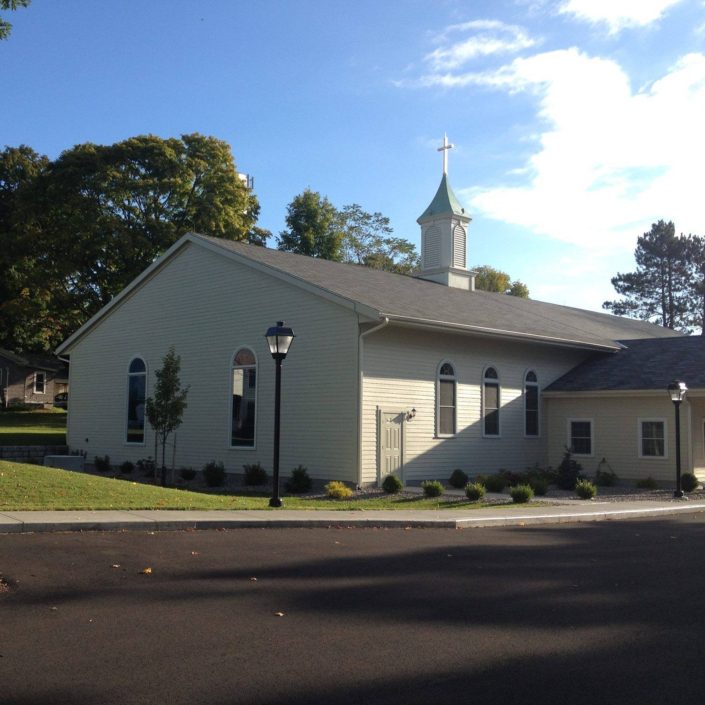Akwesasne and the American Revolution
From the Land of Flint to the Land Where the Partridge Drums The Migration from the Mohawk Valley to Kahnawake and Akwesasne
by Darren Bonaparte
Colonel Louis Cook

Colonel Lewis Cook. Illustration by Darren Bonaparte.
One of the “Mohawks” who spied and fought for the Americans was Louis Cook, also known by his Indian name of Atiatonharonkwen (translated in one source as “He Pulls The People Down.”) He was born at the original Saratoga (now Schuylerville, New York) to a black father and an Abenaki mother sometime around 1740. He and his mother were captured by Kahnawake warriors during a French attack on that settlement in 1745. Both of them were taken to Kahnawake and Louis was raised from then on as a Mohawk. He fought on the side of the French during the French and Indian War, as did many of the Kahnawake Mohawks, and saw battle at Ticonderoga, where he was wounded in a battle with Roger’s Rangers, at Ohio, where he helped the French defeat the English General Braddock, and at Oswego were he helped to conquer the British fort. He was also present when the French were defeated at Quebec.
Cook’s anti-British sentiments may have motivated him and a small faction of Kahnawake Mohawks to join the American side on the eve of the Revolution. He earned a commission as lieutenant-colonel in the rebel forces, the highest rank of any “native” involved in the conflict. He is mentioned in the papers of George Washington, who is said to have given Cook a silver pipe during a meeting with him.
The following is taken from Sparks’ Washington’s Life and Writings, Vol. Ill, p. 53, as cited by Franklin B. Hough in A “History of St. Lawrence and Franklin Counties (1853), pp. 184-185:
“On the first instant, a chief of the Caughnawaga tribe, who lives about six miles from Montreal, came in here, accompanied by a Colonel Bayley, of Coos. His accounts of the temper and disposition of the Indians are very favorable. He says, they have been strongly solicited, by Governor Carlton, to engage against us, but his nation is totally averse: that threats as well as entreaties have been used, without effect; that the Canadians are well disposed to the English colonies, and if any expedition is meditated against Canada, the Indians in that quarter will give all their assistance. I have endeavored to cherish that favorable disposition, and have recommended him to cultivate them in return. What I have said, I have enforced with a present, which I understood would be agreeable to him; and he is represented as being a man of weight and consequence in his own tribe. I flatter myself, his visit will have a good effect. His account of General Carlton’s force and situation of St. Johns, correspond with “what we have had from that quarter.”
During the Revolutionary War Cook led a small outfit of Oneidas into battle at Schenectady, and acted as a courier and scout throughout the conflict. It is interesting to note that Louis Cook was a contemporary of Joseph Brant, both being born (according to some sources) in 1740, and they shared a number of things in common. Both saw action at a young age (albeit on different sides of the same conflict) and continued their adversarial relationship through the American Revolution and beyond. Both were technically ineligible to be chiefs but were recognized as such by non-native (and sometimes native) authorities. Although Brant has been the most famous of the two by far, Cook’s role in the Akwesasne saga is just as critical. With the defeat of the Briitish, Colonel Cook was unable to return to Kahnawake because of his patriot leanings. He lived in Oneida for a while and moved to Akwesasne in 1789, settling on a tract of land along the Niconsiaga River (presentday Grass River) in Massena, New York, which he claimed to have owned prior to the Revolutionary War. This land was granted to him by an act of the New York State Legislature that same year. It is said that he was unable to live closer to the village of St. Regis because the pro-British Mohawks posed a danger to him. Despite this, he eventually had a major influence in the politics of the community. (Hough 1853:182-197)
An account from the 185U’s describes the man as his survivers knew him:
“Colonel Louis was tall and athletic, broad shouldered and strongly built, with a very dark complexion, and somewhat curly hair, which in old age became gray.
He was very reserved in speech, and by most people would be called taciturn. He seldom spoke without having something to say, and what he said, was received with deference, for it always had a meaning, and in all his deportment he strongly evinced possession of prudence, discretion and sense, and when once enlisted in any pursuit, he followed it with a constantcy and perseverence seldom equalled in the Indian character. He was prompt and generally correct in arriving at conclusions, and his judgement was relied upon, and his opinions sought by the officers of the army, with whome he was associated, with much confidence , and he possessed in a high degree the control of the affairs of his tribe, by whom he was beloved, respected, and obeyed.”
By Darren Bonaparte, historian and author of The Wampum Chronicles. Reprinted with permission.
Darren Bonaparte is a cultural historian from the Akwesasne First Nation. He is a frequent lecturer at schools, universities, museums, and historical sites in the United States and Canada. He has written four books, several articles, and the libretto for the McGill Chamber Orchestra’s Aboriginal Visions and Voices. Darren is a former chief of the Mohawk Council of Akwesasne. He is the creator of The Wampum Chronicles and historical advisor to film and television. He currently serves as the Director of the Tribal Historic Preservation Office of the Saint Regis Mohawk Tribe.
Next week: Thomas Williams














